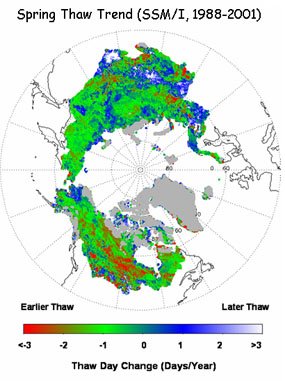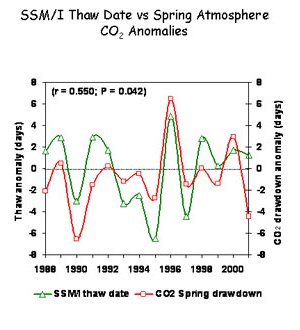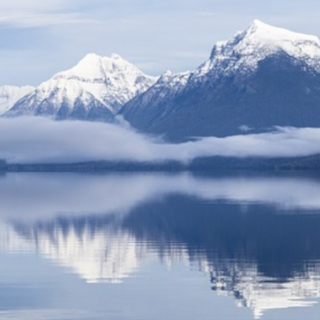Assessing Pan-Arctic Hydrology Changes
Assessing Recent Hydrologic Change over the Pan-Arctic Basin
Project Summary:
The geography and dynamics of water across this pan-Arctic region are important elements of the larger Earth System especially given growing evidence of the vulnerability of the Arctic climate and terrestrial biosphere to global change. The scope of this multidisciplinary project is develop online, near-real time capabilities for rapid assessment and monitoring pan- Arctic water budgets and river discharge to the Arctic Ocean. Major goals of the project are: 1) to develop, implement and maintain Arctic-RIMS (Rapid Integrated Monitoring System) for acquiring near-real time data and producing "quick-look" outputs that characterize terrestrial water and carbon budgets across the pan-Arctic drainage region; 2) To create hydrologically-based re-analysis products using Arctic-RIMS and to analyze these time series in our continuing work on spatial and temporal variability of the pan-Arctic land mass. Arctic-RIMS integrates a variety of surface station network, remote sensing, and modeling data sets and tools developed by the co-Investigators to produce time-varying, region-wide land surface water budgets including river inputs to the Arctic Ocean.

Spring Thaw Trend Map (left)
SSM/I derived spring thaw trend (1988-2001) for the pan-Arctic basin and Alaska, excluding non-vegetated areas (in grey). The timing of spring thaw for the pan-Arctic is occurring 8 days (P<0.03) earlier, on average, over the 14 yr record, with respective 5 and 13 day advances for Eurasia and North America.
Chart (Right)
The timing of spring thaw for the pan-Arctic is occurring 8 days (P<0.03) earlier, on average, over the 14 yr record, with respective 5 and 13 day advances for Eurasia and North America. The SSM/I thaw signal coincides with the seasonal relaxation of low temperature constraints to boreal-arctic NPP and the spring drawdown of atmospheric CO2 as reported by NOAA CMDL northern (>50°N) monitoring stations (above right); negative anomalies denote both earlier thaws and CO2 drawdown while positive values denote the opposite response. The advancing spring thaw trend may be a physical mechanism driving positive productivity trends and an advancing CO2 cycle for northern latitudes.

